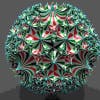


Trying to understand nature, in the meanwhile making visualizations of math and physics concepts.
https://westy31.nl/
This profile is from a federated server and may be incomplete. Browse more on the original instance.


Trying to understand nature, in the meanwhile making visualizations of math and physics concepts.
https://westy31.nl/
This profile is from a federated server and may be incomplete. Browse more on the original instance.